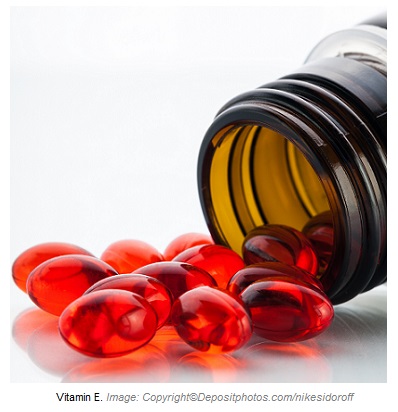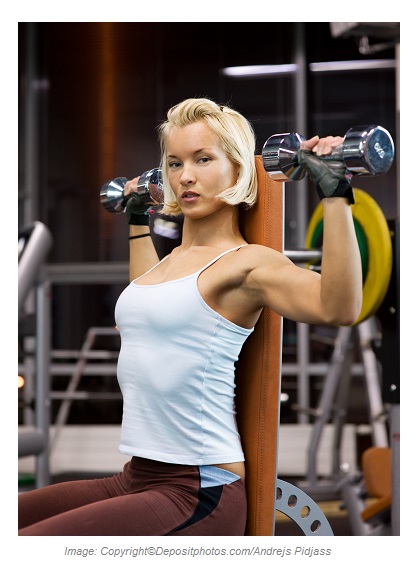 wheat germ. At that time, researchers realized that in animals with vitamin E shortage the fetus dies. It is called ”anti-infertility” vitamin, because its deficiency may lead to infertility.
wheat germ. At that time, researchers realized that in animals with vitamin E shortage the fetus dies. It is called ”anti-infertility” vitamin, because its deficiency may lead to infertility.Effects of Vitamin E:
After being absorbed from the gastrointestinal tract, vitamin E enters the blood and is distributed to all of the body`s tissues. It is stored throughout the body but primarily in the liver and fatty tissues. Vitamin E, primarily known for being an antioxidant, fights free radicals, the chemical agents produced by the body that cause cell damage and even cancer. The effect of vitamin E in fighting the damage resulted from free radicals has made it be an anti-aging supplement. For this reason, it ameliorates the effects of aging.
Although there is no strong scientific evidence to support the claim that vitamin E increases the levels of testosterone, it helps steroid production, because it provides precursors for steroid hormones, including testosterone. Athletes claim that they gain better results in building muscles by combining vitamin E and anabolic hormones than by using them alone
Interestingly, it seems that there is a relationship between vitamin E and vitamin A. Vitamin E increases the absorption of vitamin A from the intestine and elevates its levels within the cells and liver. In addition, vitamin E can prevent some toxic effects of vitamin A.
Vitamin E increases life span of red blood cells by stabilizing their membrane. It also decreases the risk of blood clot formation within the vessels. This blood-thinning effect of vitamin E benefits people with heart diseases.
Vitamin E and Athletes:
The most commonly used vitamin by athletes, vitamin E can benefit athletes in various  ways. Athletic benefits of vitamin E include:
ways. Athletic benefits of vitamin E include:
1) Plays a role in the formation of steroid hormones.
2) Reduces muscle cramps and fatigue.
3) Helps prevent muscle soreness after workouts, after being taken for at least 4 to 8 weeks.
4) Decreases free radical damage during weight training.
5) Inhibits prostaglandin formation and subsequently, combat inflammation and accelerate recovery of sports injuries
6) Facilitates recuperation from intense exercise training.
7) May prevent rhabdomyolysis (exercise – induced muscle breakdown).
The two other vitamins, other than vitamin E, that have an essential role in the formation of testosterone are vitamin B3 and vitamin B5.
For more and detailed information about vitamin E, B3 and B5, see “Vitamins”.
Non – Athletic Benefits of Vitamin E:
For non – athletic benefits of vitamin E, see “Vitamin E” under the section of “Vitamins“.
Food Sources and Dosage:
Vitamin E can be found in vegetable oils, whole grain cereals, eggs, liver, butter, wheat germ, and nuts such as almonds, walnuts, peanuts, pistachios, and pecans. Non-athletes may get their daily-required vitamin E through foods, but athletes need to take vitamin E dietary supplements to keep its levels high in the body. In other words, athletes cannot get their daily-required vitamin E via foods containing vitamin E, and external supplementation is necessary.
The daily requirement of vitamin E is 15 mg (22 IU) for adult women and men (1 mg equals to 1.49 IU). For recommended daily allowance (RDA) for vitamin E, refer to the table below.
|
Recommended Daily Allowance (RDA) for Vitamin E: |
||
|
Category/Condition |
Age (year) |
Vitamin E |
|
Infant |
0.0 – 0.5 |
4 mg (6 IU) |
|
0.5 – 1.0 |
5 mg (7.5 IU) |
|
|
Children |
1 – 3 |
6 mg (9 IU) |
|
4 – 6 |
7 mg (10.50 IU) |
|
|
7 – 10 |
7 mg (10.50 IU) |
|
|
Males |
11 – 14 |
11 mg (16 IU) |
|
15 – 18 |
15 mg (22 IU) |
|
|
19 – 24 |
15 mg (22 IU) |
|
|
25 – 50 |
15 mg (22 IU) |
|
|
>50 |
15 mg (22 IU) |
|
|
Females |
11 – 14 |
11 mg (16 IU) |
|
15 – 18 |
15 mg (22 IU) |
|
|
19 – 24 |
15 mg (22 IU) |
|
|
25 – 50 |
15 mg (22 IU) |
|
|
>50 |
15 mg (22 IU) |
|
|
Pregnancy |
15 mg (22 IU) |
|
|
Breastfeeding |
1st 6 months |
20 mg (30 IU) |
|
2nd 6 months |
19 mg (28 IU) |
|
|
Athletes |
20 – 30 mg (30 – 45 IU) |
|
Side Effects:
Consumption of high dosage of vitamin E (more than 400 to 800 IU per day for a long time) may cause blurred vision, breast enlargement, diarrhea, lightheadedness, flu-like symptoms, headaches, nausea or stomach cramp, muscle weakness, and fatigue. Dosage higher than 800 IU per day for a prolonged time impairs the immune system, disorders sexual drive, and increases the risk of bleeding in people with vitamin K deficiency.
Interactions:
For interactions of vitamin E, see “Vitamin E“ under the section of “Vitamins“.

